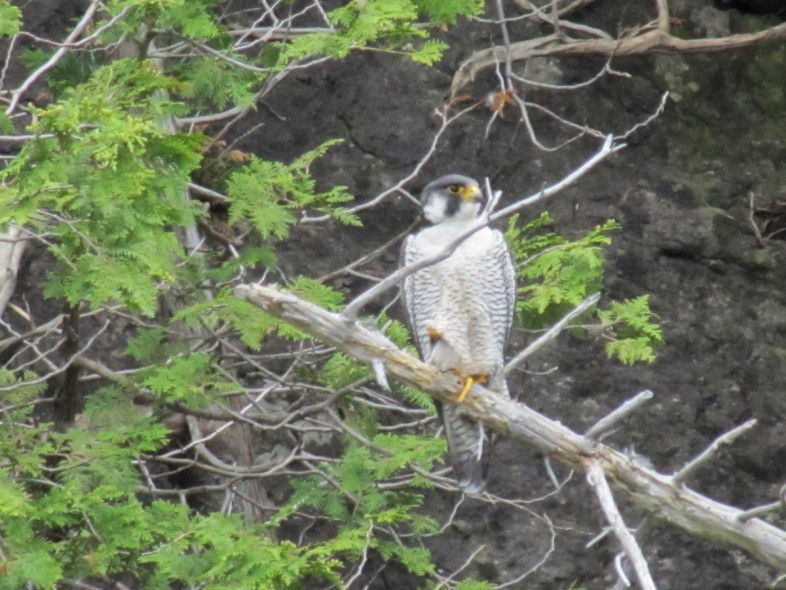
Hikers can help nesting peregrine falcons by avoiding ten Vermont cliff areas this year. / Photo by C.P. Merrill
Hiking Vermont’s hillsides is a great way to enjoy a spring day, but the Vermont Fish & Wildlife Department and Audubon Vermont recommend you check to see if the area you’re planning to hike or climb is open. Several cliff areas are currently closed to protect nesting peregrine falcons.
“Peregrine nesting is well underway this spring,” said John Buck, Vermont Fish & Wildlife Department biologist. “The falcons are very sensitive to human presence so we ask climbers and hikers to please avoid the nests with a respectful distance. The closures help people to choose an alternative route in advance.”
- Barnet Roadcut (Barnet) – Rte 5 pullout closed
- Bolton Notch (Bolton) – upper west cliff closed to climbing
- Deer Leap (Bristol) – closed
- Fairlee Palisades (Fairlee) – cliff top closed
- Marshfield Mt (Marshfield) – portions closed to climbing
- Mt. Horrid (Goshen) – Great Cliff overlook closed
- Nichols Ledge (Woodbury) – cliff top closed
- Rattlesnake Pt (Salisbury) – cliff top closed
- Snake Mountain (Addison) – overlook south of pond closed
- Table Mt (Manchester) – closed
“The areas closed include the portions of the cliffs where the birds are nesting and the trails leading to the cliff tops or overlooks,” said Buck. “In many cases the lower portions of the trails are still open. We will update the closure list as more nesting data are reported.”
The Vermont Fish & Wildlife Department partners with Audubon Vermont to monitor the sites throughout the nesting season. These sites will remain closed until August 1, but if a falcon pair doesn’t nest or if the nest is not successful, the sites will be reopened sooner.
According to Margaret Fowle with Audubon Vermont, 36 of the 40 territorial pairs monitored in 2014 attempted to nest. Twenty-seven nesting pairs were successful, producing at least 50 young falcons. The peregrine’s recovery is a great success story,” said Fowle. “The population continues to do well thanks to the efforts of our many volunteers and partners.”
“We appreciate the public’s support in respecting the cliff closures,” said Buck. “The peregrine falcon was removed from the endangered species list in 2005 due, in part, to people respecting the falcon’s nesting period. Continued respect for the falcon will help ensure that peregrines remain part of Vermont’s landscape.”
What you can do to help Vermont peregrines:
- Respect cliff closures, and retreat from any cliff where you see peregrines
- Report any disturbance of nesting peregrines to your local game warden
- Report any sightings by calling Vermont Fish & Wildlife at 802-828-1000 or emailing
Updated information on cliff closures is listed on the Vermont Fish and Wildlife Department website:www.vtfishandwildlife.com or by calling 802-828-1000.
